Tuesday 30th
I do not think there was any cloud overnight and the temperature reduced to 5.6°C. The catch went down to 166 moths of 24 species. Two Red-line Quakers were new for the year. The only migrant related species was a single Rusty-dot Pearl.
Monday 29th
There must have been some cloud last night as the temperature did not fall below 10.8°C. The catch increased to 263 moths of 34 species. Last year there was a late emergence of Kent Black Arches and the same happened last night with one noted. Lunar Underwings continue to rule the roost with 97 counted. Also of interest were 19 Delicates, three each of Deep-brown Dart and Rusty-dot Pearl and singles of Rush Veneer, Silver Y, and Brimstone.
Sunday 28th
It was calm again last night. The temperature was a fraction higher at 6.4°C. The catch crept up to 188 moths but the species increased to 26. Highlights included ten Delicates, nine Rusty-dot Pearls, seven Autumnal Rustics (one of the favourites of everybody in the autumn), five Clancy's Rustics, two each of Silver Y, Dusky-lemon Sallow and Pink-barred Sallow, plus a Rush Veneer. For the first time for a while there were no wasps in the trap.
Saturday 27th
The wind dropped but a clearing sky allowed the temperature down to 4.5°C. The catch was much improved to 180 moths of 19 species, 76 of these were Lunar Underwings. Two Deep-brown Darts were new for the year. Delicates were up to 12 and a Beautiful Hook-tip was a surprise. There were two Rush Veneers and four Rusty-dot Pearls.
Friday 26th
The wind started very fresh before dropping by dawn. The minimum temperature was 12.4°C. There were 51 moths of 12 species. Large Yellow Underwings and Lunar Underwings formed the bulk of this with 19 each. There was one Rush Veneer and one Rusty-dot Pearl.
Thursday 25th
The wind remained fresh overnight whilst shifting slightly more easterly. Surprisingly the minimum temperature was as 'high' as 13°C. There were 76 moths of 17 species. Beaded Chestnut was new for the year and there was a Rush Veneer. A Drinker and a Shaded Broad-bar were both recorded at least one month after the previous one.
Wednesday 24th
It was much more windy and wet than expected overnight. the cloud kept the temperature above 11.7°C. The trap survived and was dry. It held 61 moths of 11 species. Lunar Underwing was most numerous with 19 and there was one Scarce Bordered Straw.
A few weeks ago the finding of a Death's Head Hawk-moth caterpillar was mentioned. It was on the roam for a pupation place and happily settled down in the container and tissue paper provided. This morning it emerged and spent a good part of the day pumping up and drying its wings.
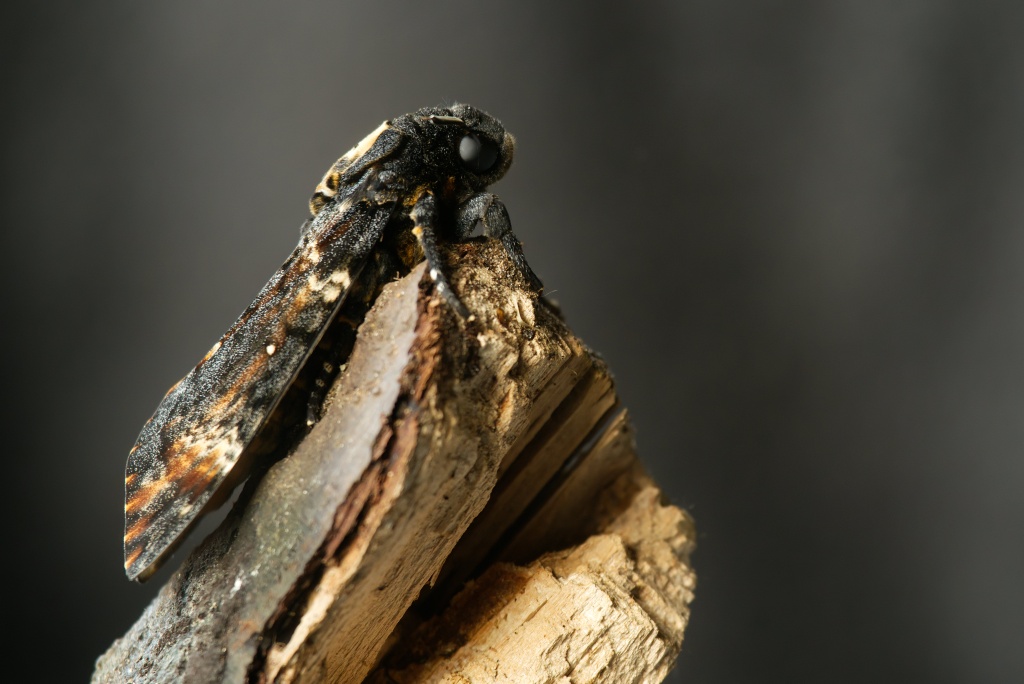
Tuesday 23rd
With the wind in the north the temperature dropped to 5.6°C and the catch to 58 moths of 19 species. Pink-barred Sallow was new for the year. Surprisingly, there were also two Delicates, a Clancy's Rustic and a Pearly Underwing. Possibly also migrants were five Scrobipalpa ocellatellas (Beet Moths).
Monday 22nd
Another cool, breezy, night with a minimum of 9.1°C. This restricted the catch to 105 moths of 22 species. Feathered Brindle was new for the year plus there was a Pearly Underwing and a Rush Veneer.
Sunday 21st
A cool breeze dropped the temperature to 9.7°C and the catch to 114 moths of 28 species. This did include three Rush Veneers, a Clancy's Rustic and a Scarce Bordered Straw. A trap at the back of the ringing room added a Gem to the migrant list.
Saturday 20th
Last nights conditions were very good with only a very light southerly and cloud building up giving light rain. This kept the temperature above 15°C until dawn when it dropped a couple of degrees.
The car park trap held 232 moths of 49 species. This included Bulrush Wainscot, two Dewick's Plusias and Dusky-lemon Sallow.
Amongst other moths traps around donated a Shore Wainscot, September Thorn, Vestal and Scarce Bordered Straw. There were 104 Rush Veneers in the 3 traps around the Observatory, so plenty to see tonight.
The best moth was caught bey a visitor in the Oasis where he caught our third ever Oak Lutestring.
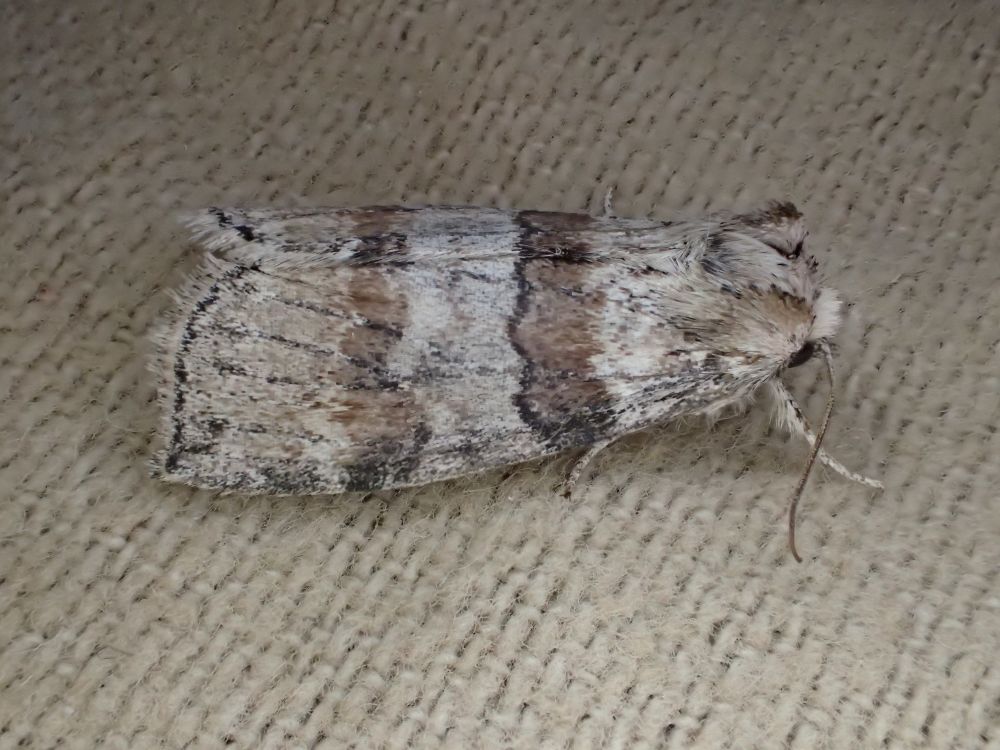
The weirdest record was underneath one of our traps - a Twin-spotted Field Cricket. All the books say these are flightless. The nearest wild ones are in the southern Mediterranean area however there are colonies in many pet stores, where they are sold as lizard food. No-one at the Observatory nor our neighbour (the farmer) keep lizards. The nearest houses are on the Estate but that is a fair scuttle for a cricket so who knows?
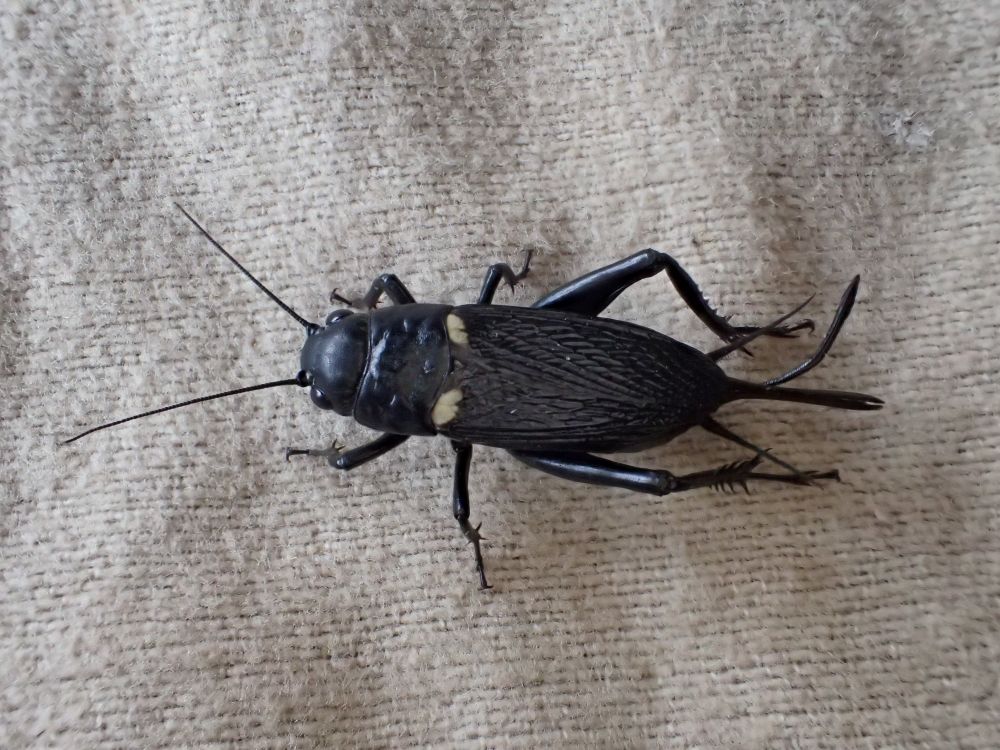
Friday 19th
Conditions improved last night with the warm temperatures continuing and the wind even dropped slightly! There were 204 moths of 36 species, a nice bump in variety. Square-spot Rustic and Large Yellow Underwings lead the counts with over 40 each, a fresh Archer's Dart was likely signs of a second generation and there were three Clancy's Rustics. For migrants there were 34 Rush Veneer, four Rusty Dot Pearls and two Turnips.
A visitor found a fully grown Spurge Hawk-moth caterpillar along the seafront.
Thursday 18th
Last night was very mild with a minimum of 17.1 °C but it was very breezy and this seemed to reduce the catch. There were 141 moths of 22 species, helped by another burst of Large Yellow Underwings. The first Black Rustic of the year appeared and there was a Scarce Bordered Straw and a Rush Veneer.
Wednesday 17th
Jonny's determinedness in keeping the trap going when he could in my absence gained its due reward with the capture of The Sorcerer. Although the Atropos list is not up to date there seems to be only two previous UK records!
Despite the wind there was clearly some migration. The car park trap also had a Vestal, a Dark Sword-grass and 44 Rush Veneers amongst 222 moths of 31 species. There was also the first record of Lunar Underwing (3) for the year- a week or so later than some inland.
A trap behind the Ringing Room had 66 Rush Veneers, a Pearly Underwing, five Rusty-dot Pearls, two Palpita vitrealis and the first Sallow of the year.
Not everyone thinks of Large Yellow Underwings as migrants but there often seems to be an autumn influx. It is interesting there were 85 in the exposed Car Park trap but only 14 in the other trap behind the Ringing Room, which is shaded to the south.
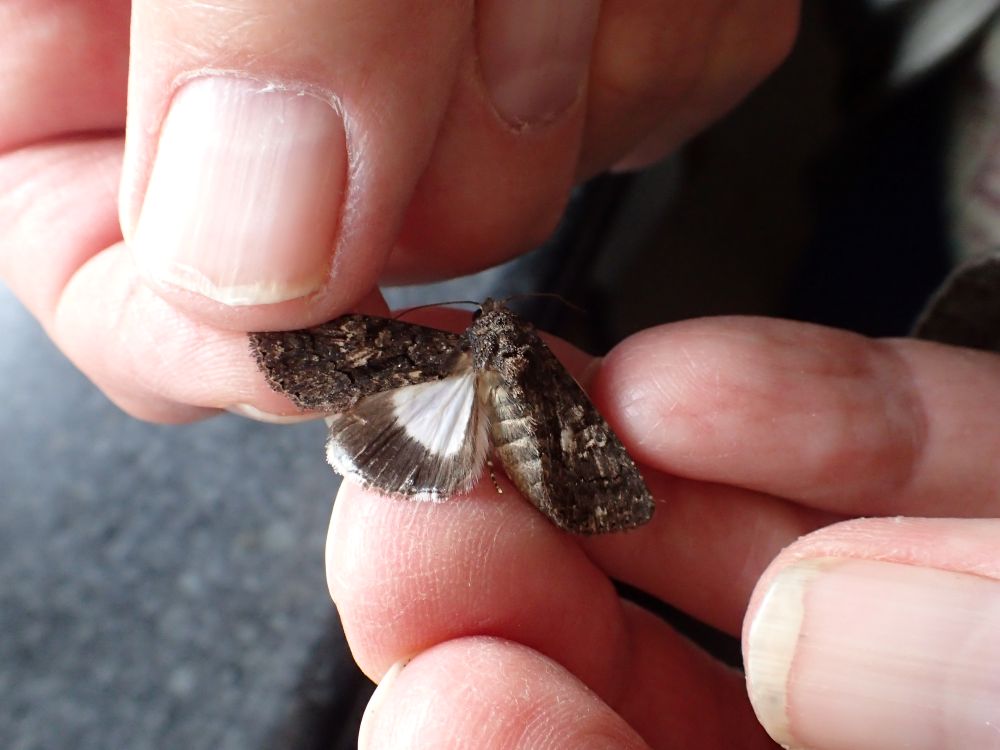
Friday 12th
The wind and cold continued with overnight temperatures dropping back below 10°C and there were 67 moths of 21 species. It has been a slow autumn for the Sallows so another Centre-barred Sallow is hopefully a sign of things to come. Migrants were poor with singles of Turnip, Rusty Dot Pearl and Dark Sword-grass.
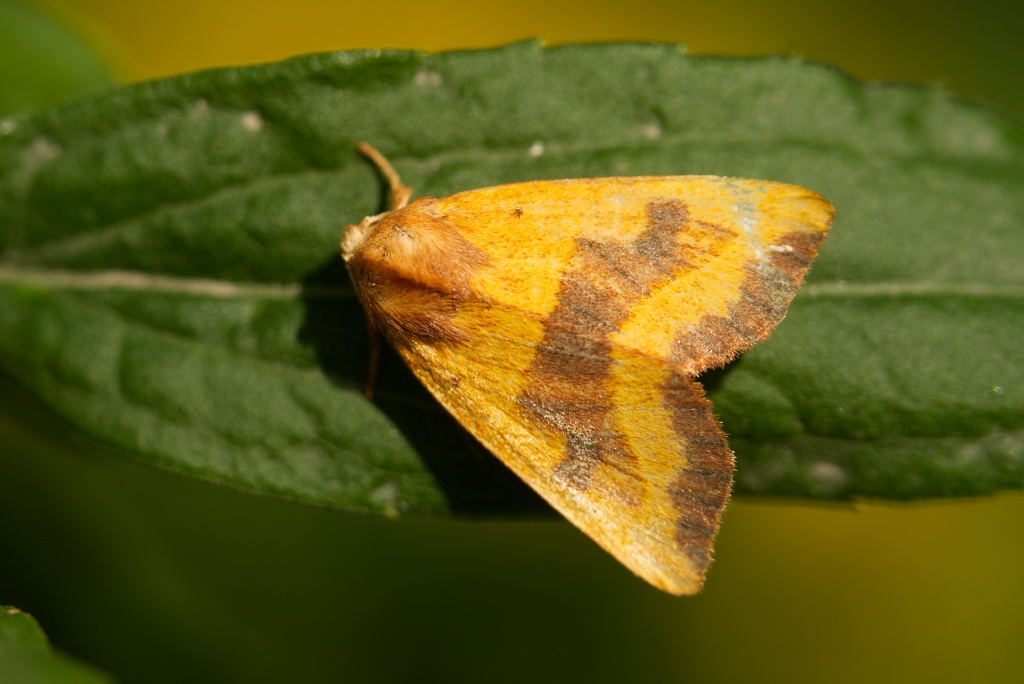
Thursday 11th
A slight increase over yesterday with 65 moths of 27 species. Migrants were limited to singles each of Silver Y, Rusty Dot Pearl and Rush Veneer plus a very late Drinker.
A visitors trap caught another Vestal.
Wednesday 10th
Although it was a bit warmer at 11.6°C there were 56 moths of 20 species. An Acleris rhombana was of note as we only get the occasional one. The migrants were three Rusty-dot Pearls, two Rush Veneers and singles of Diamondback, Dark Sword-grass and Pearly Underwing.
Tuesday 9th
The moth trap is no competition for the brightness of the moon. A clear sky allowed the temperature down to 8.2°C. There were just 43 moths of 21 species, interestingly not a single Ruby Tiger. There were three Rush Veneers and two Rusty-dot Pearl.
A visitors trap caught a Vestal. These have been surprisingly scarce considering the run of other migrants.
Monday 8th
Last night started with some low cloud creating humid conditions great for mothing but not good if you had hoped to see the blood moon. Once the moon rose above the cloud it was very bright and continued to limit the catch. There were 105 moths of 32 species. I do not remember Ruby Tiger ever being the most numerous species but 37 of them were well ahead of any rivals. There was another Large Thorn. Migrants were two Four-spotted Footmen, three Silver Ys, a Diamondback and a Palpita vitrealis.
A Toadflax Brocade larva demonstrated that the adults continue to avoid the traps.
A visitors trap caught a Convolvulus Hawk-moth.
Saturday 6th
With a clear sky overnight it was cool again, just keeping above 10°C. Large Yellow Underwing was most frequent with 29. There were eight Rush Veneers, four Rusty-dot Pearls and a Clancy's Rustic.
Friday 5th
A very chilly night going under 10°C brought numbers down to 153 moths of 30 species. A Calybites phasianipennella was by far the highlight and a second record for the bay following a record earlier in July. Other moths included an L-album Wainscot and an Oak Hook-tip with migrants in the form of Scarce Bordered Straw, two Rusty-dot Pearls and 13 Rush Veneers.
A visitors trap caught the fourth Striped Hawk-moth of the year and the first for the autumn.
Thursday 4th
Three traps were set around the Obs again as weather conditions improved but it was still far from ideal and there were accordingly 398 moths of 54 species. A nice September Thorn and a slightly worn Feathered Gothic were new for the year list. There were some migrants in a Dark Sword-grass, a Pearly Underwing and two Diamondbacks.
We do not catch female Gypsy Moths but today we found where they might be hiding. Whilst checking the bird nest boxes we found several female Gypsy Moths. I think they tend to sit tight and wait for the males to find them - a sensible strategy when you are laden with eggs. There were also several Copper Underwings in the boxes.
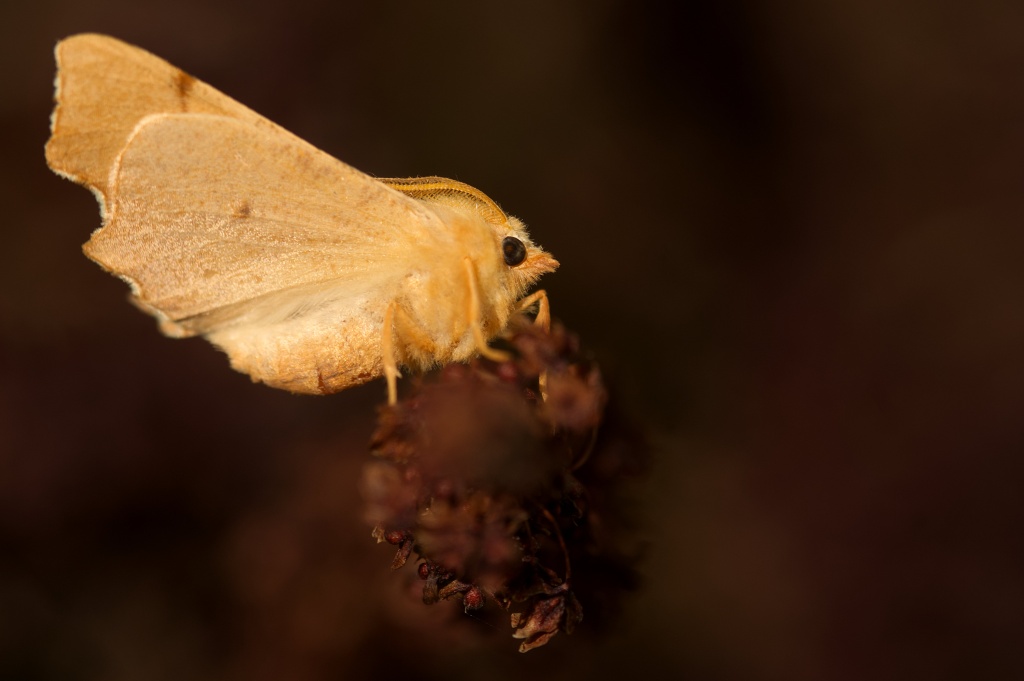
Monday 1st
A valiant effort was made with three traps set around the Obs ahead of the awful overnight conditions projected for this week. 654 moths of 63 species were caught with four new for the year - Portland Ribbon Wave, Dewick's Plusia, Palpita vitrealis, and Feathered Gothic. Despite the winds and rain, it was a good showing of migrants with a single Dark Sword-grass, eight Diamondbacks, and 53 Rush Veneers.
